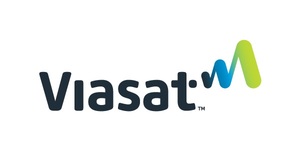CARLSBAD, Calif., June 7, 2021 /PRNewswire/ -- Viasat Inc. (NASDAQ: VSAT), a global communications company, today announced the first satellite in its ViaSat-3 global constellation, which will serve the Americas and the surrounding oceans regions, has reached a major milestone with completion of payload integration and performance testing, and shipment to the Boeing Satellite Systems facility in El Segundo, Calif.
The payload will be integrated with the bus module, which is based on Boeing's proven 702 platform, and the satellite will then undergo a complete series of environmental testing to simulate the rigors of launch and operation in the harsh environment of space. Launch is targeted for early calendar year 2022.
"This is an incredibly exciting time for Viasat as the first of the three high-powered ViaSat-3 satellites in our global constellation enters the final stages of production," said Dave Ryan, president, Viasat Space & Commercial Networks. "Once complete, we will be ready to put the world's highest-capacity single satellite into geostationary orbit to serve the world by delivering broadband to the hardest-to-reach areas anywhere — on the ground, in the air and at sea."
Each ViaSat-3 satellite is expected to generate over 20kW of payload power, making it among the highest-power commercial satellites ever built. Just three of these satellites will cover nearly the entire globe, and are expected to deliver over 3,000 Gigabits per second (Gbps) of capacity — or 3 Terabits per second (Tbps) total — for 15 years or more. The ViaSat-3 constellation is anticipated to have roughly eight times more capacity than Viasat's current fleet combined. Vast amounts of bandwidth are needed to address increased demand for high speed internet access — particularly in the video streaming realm. ViaSat-3 represents a major advancement in Viasat's mission to extend broadband internet service to the many places around the world that don't have it.
Ryan added, "While the payload was assembled at Viasat's Tempe, AZ facility, the effort was company-wide. From Tempe, to the antenna expertise in Duluth (GA), to Germantown (MD) for their software and systems engineering know-how and other offices around the world from Chennai, India to Lausanne, Switzerland as well as at our Carlsbad headquarters, all of these teams worked together to come up with a totally unique way to not only build this spacecraft, but to test it in record time."
Concurrently, the ViaSat-3 ground segment has made significant progress over the past year in preparation to support the upcoming launches. Viasat is also working on the construction of the payloads for the second and third ViaSat-3-class satellites, ViaSat-3 (EMEA) and ViaSat-3 (APAC). The ViaSat-3 (EMEA) payload is expected to be delivered to Boeing in the latter part of FY2022.
About Viasat
Viasat is a global communications company that believes everyone and everything in the world can be connected. For 35 years, Viasat has helped shape how consumers, businesses, governments and militaries around the world communicate. Today, the Company is developing the ultimate global communications network to power high-quality, secure, affordable, fast connections to impact people's lives anywhere they are—on the ground, in the air or at sea. To learn more about Viasat, visit: www.viasat.com, go to Viasat's Corporate Blog, or follow the Company on social media at: Facebook, Instagram, LinkedIn, Twitter or YouTube.
Forward-Looking Statements
This press release contains forward-looking statements that are subject to the safe harbors created under the Securities Act of 1933 and the Securities Exchange Act of 1934. Forward-looking statements include, among others, statements that refer to the launch timing of the ViaSat-3 (Americas) satellite; the payload delivery timing of the ViaSat-3 (EMEA) satellite; the expected power, bandwidth, coverage and useful life of the ViaSat-3 satellites; and the performance, capabilities and anticipated benefits of the ViaSat-3 satellites. Readers are cautioned that actual results could differ materially and adversely from those expressed in any forward-looking statements. Factors that could cause actual results to differ include: risks associated with the construction, launch and operation of satellites, including the effect of any anomaly or operational failure; the impact of the COVID-19 pandemic on our business, suppliers, consumers, customers, and employees or the overall economy; the ability to realize the anticipated benefits of the ViaSat-3 satellites; unexpected expenses or delays related to the ViaSat-3 satellites; the ability to successfully implement Viasat's business plan for broadband services on Viasat's anticipated timeline or at all, including with respect to the ViaSat-3 satellites; contractual problems, product defects, manufacturing issues or delays, regulatory issues, technologies not being developed according to anticipated schedules, or that do not perform according to expectations; and increased competition and other factors affecting the connectivity sector, generally. In addition, please refer to the risk factors contained in Viasat's SEC filings available at www.sec.gov, including Viasat's most recent Annual Report on Form 10-K and Quarterly Reports on Form 10-Q. Readers are cautioned not to place undue reliance on any forward-looking statements, which speak only as of the date on which they are made. Viasat undertakes no obligation to update or revise any forward-looking statements for any reason.
Copyright © 2021 Viasat, Inc. All rights reserved. Viasat, the Viasat logo and the Viasat signal are registered trademarks of Viasat, Inc. All other product or company names mentioned are used for identification purposes only and may be trademarks of their respective owners.
SOURCE Viasat, Inc.

Related Links
WANT YOUR COMPANY'S NEWS FEATURED ON PRNEWSWIRE.COM?
Newsrooms &
Influencers
Digital Media
Outlets
Journalists
Opted In




Share this article